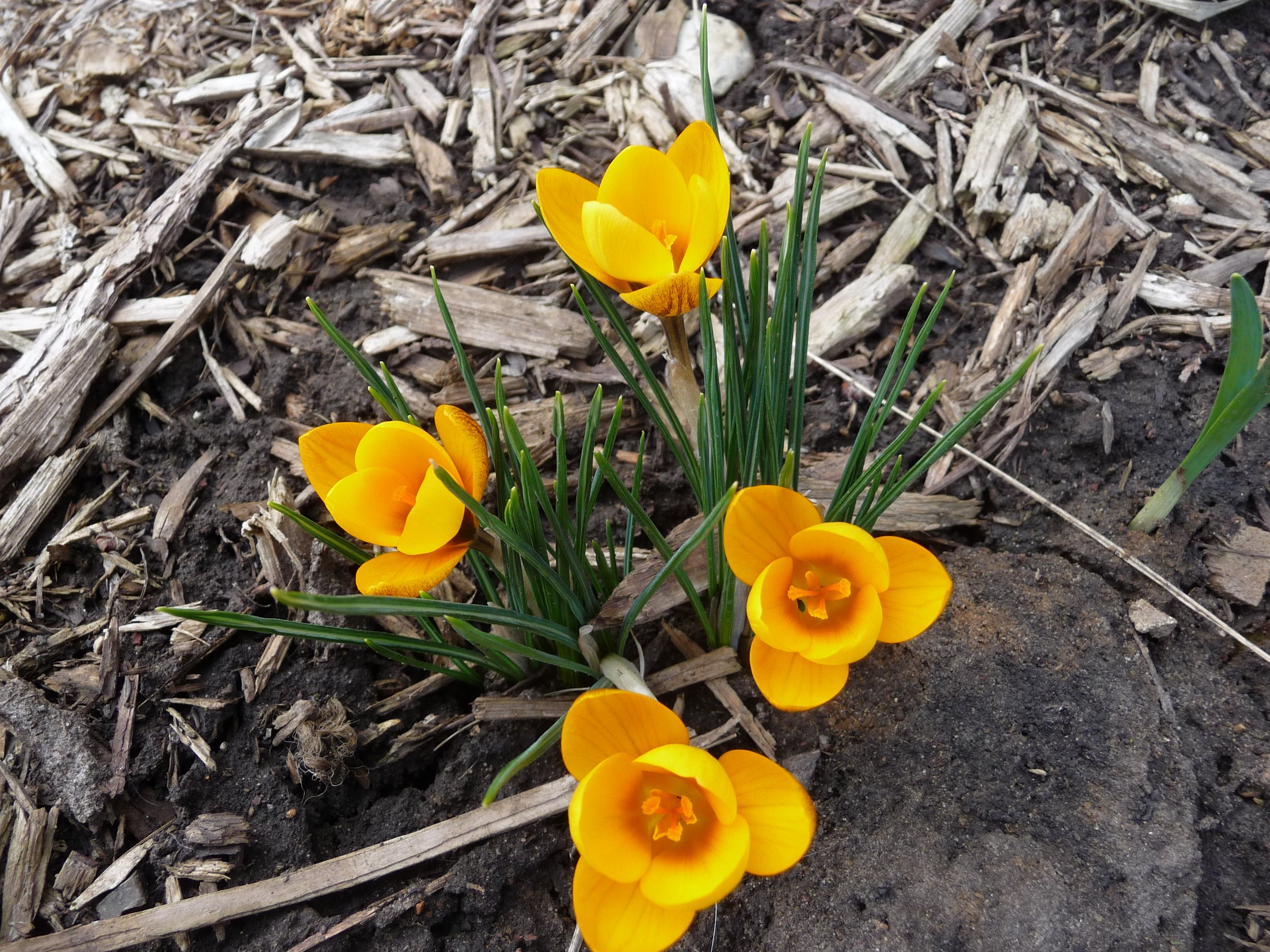Minor Bulbs for Major Impact
Spring is far off and gardeners are attempting to finish up fall tasks and prepare for winter. But in order to have an early burst of beauty in the spring, gardeners should plan ahead, planting bulbs in the fall, in order to have something colorful on a dull spring day. Many people utilize major bulbs like tulips, daffodils, and hyacinth, but the minor bulbs are woefully underrepresented in most landscapes.
Good things come in small packages and minor bulbs are no exception. This classification refers to small-sized flowering bulbs that bloom very early in the spring, sometimes through snow cover. They are often only planted in small numbers, but look best in “drifts” or larger numbers, upwards of fifty. If space does not allow such a large number, smaller groupings will do. Minor bulbs include beauties such as grape hyacinth, snow drops, squill or scilla, and the ever-beautiful crocus.
Regardless of your choice in bulbs, plant using the same method. When purchasing bulbs, buy from a reputable source, select ones that are firm and solid, avoiding moldy, soft, sour-smelling, and shriveled bulbs. Choose a sunny, well-drained location. Remember that these flowers bloom very early, before any trees or other plants have leafed out. Therefore, they can be placed close to other plants. Plant bulbs at a depth of 2–3 times the diameter of the bulb, making sure to place the root plate facing down into the soil. Plant bulbs starting in mid-September until mid-October. Cornell University has an excellent guide for planting bulbs at this site: http://ccenassau.org/resources/bulbs-depths-for-planting. This resource also lists many of the minor bulbs and their distinguishing characteristics. It lists a series of minor bulbs that if planted would provide continuous blooms from March to July.
The goal of planting the bulbs in the fall is to allow them to form roots before winter. Therefore, water thoroughly at planting. This should be sufficient unless fall weather is unusually hot and dry. In addition, after the ground freezes several inches of mulch will provide winter protection and prevent damage from the freezing/thawing cycle.
Snowdrops (Galanthus nivalis) are one of the earliest bloomers of the minor bulbs, often emerging through snow cover. Their white flowers are small, only 6 inches wide and tall, and hang down like a shepherd’s hook, one per bulb. They will not last long into the spring.
Siberian Squill (Scilla sibirica), is another 6-inch flower, but are star shaped and blue, up to three per bulb. The leaves emerge first, then the flowers, not long after Snowdrops. They will bloom for several weeks and are not bothered by snow and freezing temperatures. They look particularly beautiful when allowed to naturalize under trees. Some experts recommend “never planting less than 100 bulbs!”
Crocus (Crocus vernus) are probably the most popular minor bulbs. They bloom next in the sequence, after the previously mentioned bulbs. The 2–3-inch blooms range in color from purple to white to yellow and last several weeks.
Grape Hyacinth (Muscari armeniacum), are the latest bloomers, forming colonies that look like a river. Each bulb produces up to 3 flower stalks that are 4–8 inches tall packed with up to 40 individual fragrant flowers.
Start this fall by planting some minor bulbs and reap the benefits in a burst of beauty in early spring.
Carol Shirk
Master Gardener Volunteer
